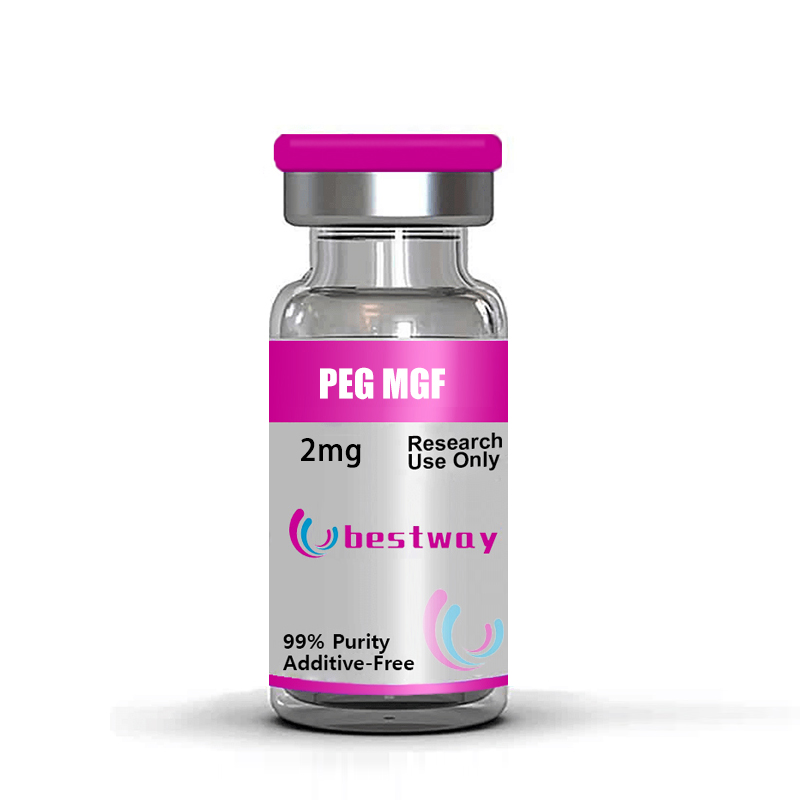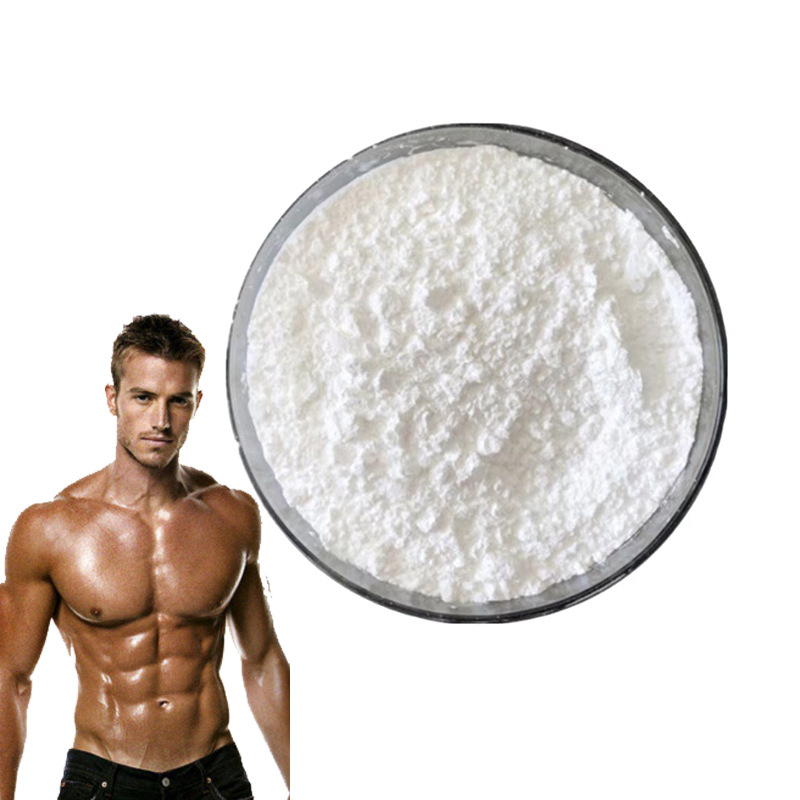What is PEG-MGF peptide?
PEG MGF, short for PEGylated mechano-growth factor, is a two-component anabolic peptide. PEG MGF is a well-known derivative of the compound insulin-like growth factor-1 (IGF-1).IGF-1 is thought to play an important role in the regulation of growth hormone (GH). In addition, this chemical may also help promote bone and tissue growth.
PEG MGF promotes muscle growth by prompting various receptors to drive myoblasts to divide. Several studies have also shown that PEG MGF can increase the number of muscle stem cells that bind to existing muscle cells, thereby promoting muscle growth.
PEG MGF has a short half-life of about 5 to 7 minutes. To address this, this experimental chemical is PEGylated.
PEGylation is performed by adding polyethylene glycol (PEG) to the peptide. By adding the PEG group, the half-life of MGF can be safely and effectively extended to 48-72 hours.
Possible Applications of PEGylated Mechano-Growth Factor Peptides:
PEG MGF Peptides and Bone Repair
In the animal model mouse, MGF treatment improved the migration of chondrocytes (cells responsible for cartilage formation) from the bone to the cartilage where they are needed.
PEGylated Mechano-Growth Factor (PEG-MGF) significantly improved articular cartilage repair in a rabbit model and modulated osteoblast activity, leading to faster bone healing.
PEG MGF Peptides and Heart Disease
According to a study involving myocardial repair research, PEG MGF may reduce the risk of heart disease by preventing programmed cell death in myocardial cells. PEG MGF has also been shown to modulate the migration and proliferation of cardiac stem cells.Another study involving MGF peptides found that the experimental chemical provided greater stem cell recruitment and less cardiac remodeling in rats.
PEG MGF Peptides and Stroke
A team of researchers found that PEG MGF could help prevent neurological damage caused by insufficient blood flow to the brain. Additionally, studies have shown that PEG MGF can help prevent stroke by preventing programmed cell death in brain cells due to oxidative stress.
PEG MGF Peptide and Muscle Repair
According to scientific studies, PEG MGF peptide helps improve muscle repair in patients with age-related sarcopenia (loss of muscle mass). The results also mean that PEG MGF may be involved in skeletal muscle regeneration.Studies have shown that MGF is able to modulate muscle inflammation in adult male mice and enhance the recruitment of macrophages and neutrophils in skeletal muscle injury.
PEG MGF Peptide and Muscle Growth
Studies have found that PEG MGF is essential for muscle cell activation, proliferation, and differentiation in a mouse model. A single intravenous injection of MGF increased mean muscle fiber size by 25% compared to multiple intramuscular injections.
PEG MGF Peptide and Cognitive Health
PEGylated MGF has also been shown to mitigate the effects of age-related neurological diseases. In addition, it prevented motor neuron loss in a gerbil transient cerebral ischemia model.How does PEG MGF Peptide work?
PEG MFG is an anabolic peptide form, split variant, or isoform of insulin-like growth factor (IGF-1). This property explains why PEG MGF can mimic the effects of IGF-1, such as enhancing fat metabolism, improving muscle repair, and lean body mass.
After some muscle fibers weaken due to post-exercise activity, PEG MGF may be able to send growth signals to nearby undamaged muscle cells. It can now grow lagging body parts where muscle growth is needed, which gives it a special ability.















